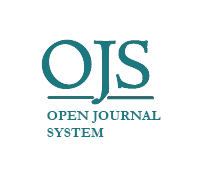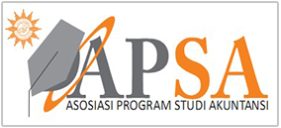Determinan Akuntabilitas Pengelolaan Keuangan Organisasi Nonlaba
DOI:
https://doi.org/10.22219/jrak.v12i2.18674Keywords:
Keywords: Transparency, restricted funds, internal control systems, accessibility and presentation of financial reports, accountability NGO’s financial managementAbstract
The mainly funding source of NGOs come from community donations that highly dependent on the high level of accountability. However, several recent surveys show that public trust in NGOs is the lowest compared to other institutions. This shows that the accountability of NGO still needs to be improved. Based on legitimacy and stewardship theory, this study analyzes the impact of internal control systems, transparency, with restrictions fund, presentation and accessibility of financial statements on NGOs accountability of financial management. Sample of the research consisted of 97 NGOs with 120 respondents and used purposive sampling method. To collect data, a questionnaire was used which was distributed to staff and finance managers of NGOs. The results of study provide evidence that internal control systems, transparency and with restrictions fund have a positive effect, presentation of financial statements has no effect and accessibility has a negative effect on the accountability of NGO financial management. Result of this study can be used as input for efforts to increase the accountability of NGO financial management. This study also emphasizes some implications for improving accountability of NGO financial management.
Downloads
References
Aprilya, KR (2020). The Influence of Competence, Organizational Commitment, Transparency and Community Participation on Village Fund Management Accountability. Jurnal Ilmu Dan Riset Akuntansi, 9(3), 1–20.
Artini, NLW, & Putra, IPDS (2020). The Influence of Regional Financial Report Presentation, Financial Report Accessibility and Internal Control System on Regional Financial Management Accountability. Hita Akuntansi dan Keuangan, 1(2), 188–218.
Azizah, et al. (2015). Presentation of Financial Statements, Accessibility of Financial Statements, and Government Internal Control System as Determinants of Transparency and Accountability of Regional Financial Management. Journal of Research and Applications: Accounting and Management, 1(2), 111.
Bani, RS (2020). The Influence of Regional Financial Report Presentation, Qualitative Characteristics, Accessibility of Financial Reports, and Internal Control Systems, on Transparency and Accountability of Regional Financial Management in East Barito Regency.
Deegan, C. (2002). Introduction: The Legitimising Effect of Social and Environmental Disclosures – a Theoretical Foundation. Accounting, Auditing & Accountability Journal, 15(3), 282–311.
Donaldson, L., & Davis, JH (1991). Stewardship Theory or Agency Theory: CEO Governance and Shareholder Returns. Australian Journal of Management, 16(1), 49–64.
Dwiyanto, A. (2006). Mewujudkan Good Governance Melalui Pelayanan Publik. Gadjah Mada University Press.
Edelman. (2021). 2021 Edelman Trust Barometer. https://www.edelman.com/trust/2021-trust-barometer
Ghozali, I. (2016). Multivariate Analysis Application with IBM SPSS 23 Program ((Issue 8). Badan Penerbit Universitas Diponegoro.
Gultom, IR, & Poputra, A. (2015). Analysis of the Implementation of PSAK No. 45 concerning Financial Statements of Non-Profit Organizations in Achieving Transparency and Accountability of the GMIM Synod Office. Jurnal Riset Ekonomi, Manajemen, Bisnis Dan Akuntansi, 3(4), 527–537.
Hulu, S. (2020). Analisis Determinan Akuntabilitas Pengelolaan Keuangan Daerah di Pemerintah Daerah Kabupaten Nias Utara. Thesis.
Ibrahim, R. (2010). NGO Code of Ethics & Civil Society Organization Law, Experiences of Several Countries. Secretariat of the Indonesian NGO Council.
Ibrahim, R., & Suroto. (2015). Accountability. Journal of Civil Society Organization Accountability Edition II, 11.
Ikatan Akuntan Indonesia. (2018). DE ISAK 35: Penyajian Laporan Keuangan Entitas Berorientasi Nonlaba. Ikatan Akuntan Indonesia.
Jones, et al. (1985). The Needs of Users of Governmental Financial Reports. Governmental Accounting Standards Board of the Financial Accounting.
Joseph F. Hair, William C. Black, Barry J. Babin, REA (2010). Multivariate Data Analysis (7th edition). Upper Saddle River- Prentice Hall.
Kholifah, NN (2020). The Influence of Village Apparatus Competence, Village Government Organizational Commitment, and Transparency of Village Fund Management Accountability through Village Government Performance as Mediation (Case Study on Village Apparatus in Sumber and Remba Subdistricts. Thesis.
Kumara, E. (2015). Financial Accountability Internal Control and Financial Management of Non-Profit Organizations. Journal of Civil Society Organization Accountability Edition II, II (February), 17–32.
Kusrawan. (2019). The Effect of Transparency, Competence, Internal Control and Utilization of Information Technology on Village Government Accountability in Padangguni District, Konawe Regency. Jurnal Geo Ekonomi, 10(2), 271–284.
Lasfita, N. (2020). Application of ISAK No. 35 in the Religious Organization of the Al-Mabrur Sukolilo Mosque, Surabaya.
NGOs, K. (2015). Introducing and Publicizing Minimum Standards for NGO Accountability (Annual Report). Konsil LSM.
Maani, KD (2009). Transparency and Accountability in Public Services. Demokrasi, VIII(1).
Mahmudi. (2013). Manajemen Kinerja Sektor Publik. Sekolah Tinggi Ilmu Manajemen YKPN.
Mualifu, Guspul, A., & Hermawan. (2019). The Effect of Transparency, Competence, Internal Control System, and Organizational Commitment to Village Government Accountability in Managing Village Fund Allocation (Empirical Study of All Villages in Mrebet Subdistrict, Purbalingga Regency). Journal of Economics, Business and Engineering, 1(1), 49–59.
Nikmahtul, M., & Darno. (2019). The Effect of Transparency and Accountability on Donor Trust in Religious Social Foundations. Jurnal Akuntansi Terapan Vol., 1(1).
Nordiawan, D. (2010). Akuntansi Sektor Publik. Salemba Empat.
Nurrizkiana, B., Handayani, L., & Widiastuty, E. (2017). Determinants of Transparency and Accountability of Regional Financial Management and Its Implications for Public-Stakeholder Trust. Jurnal Akuntansi dan Investasi, 18(1), 28–47.
Penabulu, Y. (2015). Concept of Internal Control Financial Management Training for ELSAM Financial Management Team. Penabulu Alliance.
Pramesvari, LN (2019). The Phenomenon of Management and Reporting of Yogyakarta Jogokariyan Mosque on Mental, Physical and Spiritual Aspects. Jurnal Ekonomi, Bisnis, dan Akuntansi, 21(3).
Primayani, PR, Herawati, NT, Ari, N., & Darmawan, S. (2014). Effect of Internal Control, Value For Money, Presentation of Financial Statements and Accessibility of Financial Management (Empirical Study on SKPD in Klungkung District Government). E-Journal S1 Ak Ganesha University of Education, 1(1).
Rakhmawati, I. (2018). The Effect of Accountability and Transparency on the Effectiveness of School Operational Assistance (BOS) Management with Stakeholder Participation as a Moderating Variable. AKTSAR: Jurnal Akuntansi Syariah, 1(1), 95–112.
Rini, P.N.F. (2017). The Influence of the Implementation of Regional Financial Accounting Systems, Human Resource Competence, Internal Control Systems, and Utilization of Information Technology on the Quality of Local Government Financial Reports.
Sari, M.F. (2017). Analysis of the Implementation of the Principles of Accountability and Transparency in Financial Management at Algheins Non-Governmental Organizations (NGOs) in Ponorogo Regency.
Sari, R.P., Mulyani, C.S., & Budiarto, D.S. (2020). The Importance of Internal Control to Improve Transparency and Accountability of Regional Financial Management. Jurnal Riset Akuntansi Mercu Buana, 6(1), 1.
Scanlon, MM, & Alawiyah, T. (2015). NGOs in Indonesia: Context, Concept and Current Profile. In NSSC Publications.
Sucipto. (2017). Low, Public Trust in NGOs. Warta Ekonomi.Co.Id. https://www.wartaekonomi.co.id/read133630/low-kebelian-publik-pada-lsm.
Superdi. (2017). The Effect of Financial Statement Presentation, Accessibility and Regional Financial Accounting System on Regional Financial Management Accountability (Empirical Study on the Sijunjung Regency Regional Work Unit). JOM Fekon, 4(1).
Uddin, MM, & Belal, AR (2019). Donors' Influence Strategies and Beneficiary Accountability: an NGO Case Study. Accounting Forum, 43(1), 113–134.
Wahyuni, DS (2020). Construction of Financial Statements for Educational Institutions (Study at MTs. Bustanul Ulum Wongsorejo Banyuwangi. Thesis.
Yuanita. (2019). Analysis of Factors Affecting the Quality of Financial Statements of Non-Profit Organizations (Empirical Study on NGOs in Indonesia). Publication manuscript.
Yuliani, NL (2017). The Influence of Financial Statement Presentation, Qualitative Characteristics, Accessibility and Internal Control on Transparency of Local Government Financial Statements. Jurnal Bisnis dan Ekonomi (JBE), 24(1), 1–14.
Downloads
Published
Issue
Section
License
Copyright (c) 2022 Evi Yuanita, Bambang Suripto

This work is licensed under a Creative Commons Attribution 4.0 International License.

Jurnal Reviu Akuntansi dan Keuangan is licensed under a Creative Commons Attribution-NonCommercial-ShareAlike 4.0 International License.
Authors who publish with this journal agree to the following terms:
- Authors retain copyright and grant the journal right of first publication with the work simultaneously licensed under a Creative Commons Attribution-NonCommercial-ShareAlike 4.0 International License that allows others to share the work with an acknowledgement of the work's authorship and initial publication in this journal.
- Authors are able to enter into separate, additional contractual arrangements for the non-exclusive distribution of the journal's published version of the work (e.g., post it to an institutional repository or publish it in a book), with an acknowledgement of its initial publication in this journal.
- Authors are permitted and encouraged to post their work online (e.g., in institutional repositories or on their website) prior to and during the submission process, as it can lead to productive exchanges, as well as earlier and greater citation of published work (See The Effect of Open Access).










